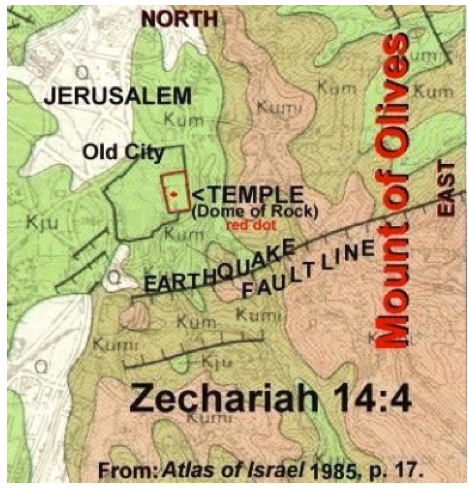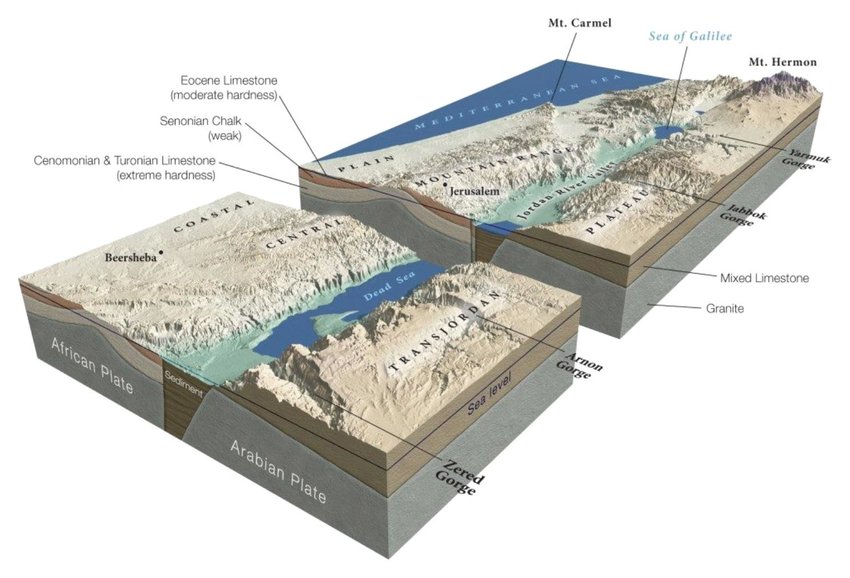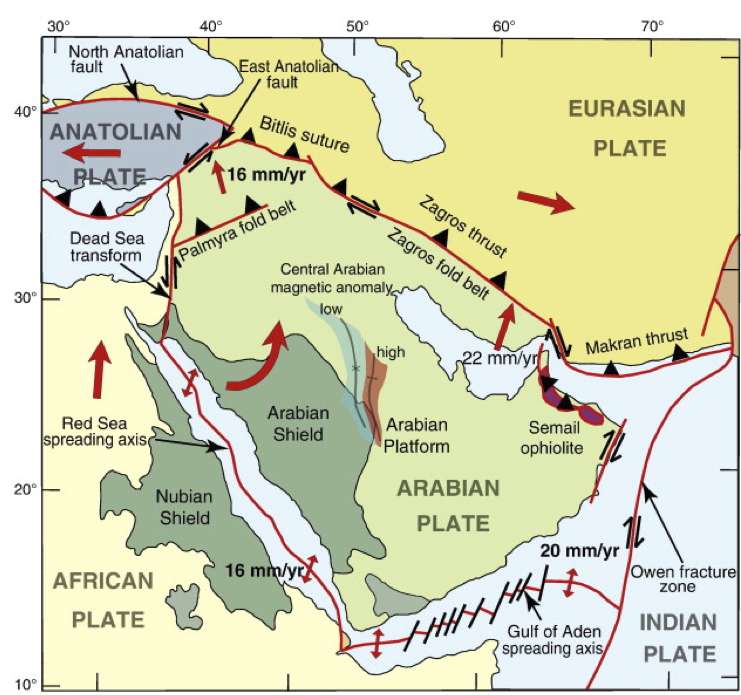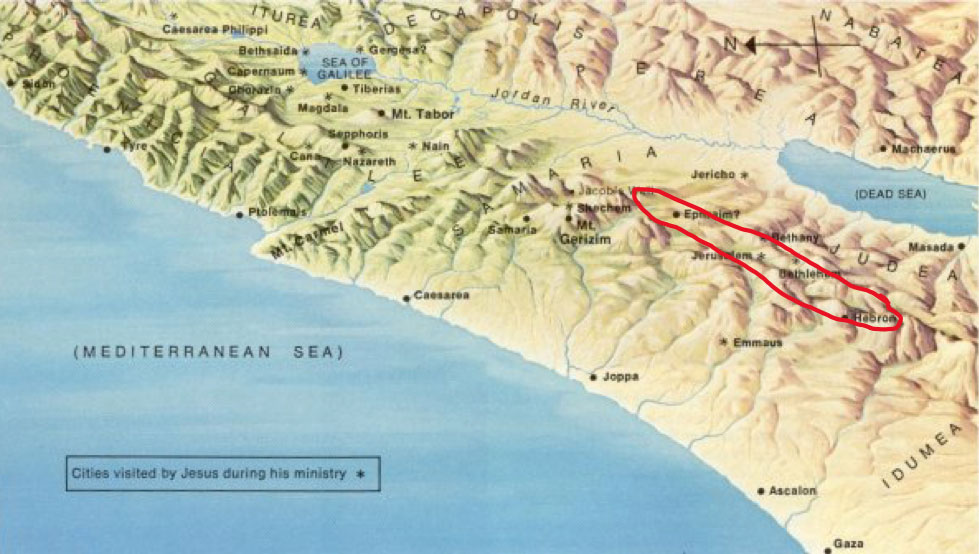“That Day” From God’s Perspective: Zech. 14:1-9
As we did in the second part of this study, we will carefully work through the details and implications of these details in this final prophecy.
There is something off in the first verse. When a city was captured in Bible days, Israel, or their enemies, always took the spoil away, back to their homes (e.g. Num 31:9-12, Deut 3:5-6, Josh 22:5-8). Why then the specific mention that this enemy divides the city’s spoil within the city? Does this not strongly suggest that this enemy intends to stay in the city, to claim it as their own?
This suggestion is strengthened by our current knowledge of the Arab claims about Jerusalem: They view the eastern half of Jerusalem to be their rightful possession. When victory in the city is gained by the Palestinian Arabs, one can imagine the gleeful celebrations…and the subsequent rampage through the city seeking to pillage and destroy anything Jewish: “The city shall be taken, the houses rifled, and the women ravished.” (Zech 14:2)
It a day of profound distress for God’s people that brings them to their knees. Half the Jewish population is taken as captives from the city, quite possibly to be sold in the slave markets of a new Caliphate[1]. Only by the grace of Yahweh is a remnant able to find some safety and refuge within the city (in the Western section, in the area of ancient Zion?).
There is one question that clamors to be answered: How could this Arab victory ever happen? Chapter 12 pictured the Arab peoples surrounding Israel as men drunk with wine, unable to succeed at any of their attempted conquests. What has changed? Only one thing: “For I will gather all the nations to battle against Jerusalem” (14:2)!
Consider the precedent set when a multi-state NATO-led coalition began a military intervention in Libya (March 2011). In response to events during the Libyan Civil War in which civilians were attacked by Gaddafi, the UN Security Council voted to intercede in this sovereign country to rescue its citizens and stop these “crimes against humanity”[2]. Israel took notice of this intervention, knowing they could easily be put in a situation where similar claims could be made by a Palestinian state if it were to come into existence.
Is this, then, what will happen? The nations of the world agreeing together to intercede to stop “crimes against humanity” from being carried out against the Palestinians by Israel? We may not know all the events that converge to bring the nations of this world against Jerusalem, but we are not left in any doubt that God intends this very outcome:
So, the Palestinians have a moment of victory over their sworn enemies, but they are not allowed to take the whole city. We rightly ask, “By whom?” Is it the UN holding to the idea that Jerusalem must be divided into a Jewish and Palestinian part? Or does God prevent it (as in Isa. 26:20)? However, this happens, a place of safety is now provided for the remaining population, and clearly, God’s eyes are now open and upon His people.
But who are these people? Once again, a significant name is placed before us: “the inhabitants of Jerusalem”. But aren’t these the very people we read about in ch.12 who became the source of the new confidence of the military leaders in the “LORD of Hosts their God”?
Putting together all these hints leads us to consider that the “inhabitants of Jerusalem” must at least be a faithful remnant that has returned to their God. Might this also include the persecuted group of Jews who have come to confess that Jesus is their Messiah, perhaps led by the Elijah of the 21st century? Whether we feel settled or not on their identity, it is their faith and persistent prayers that have brought about a dramatic change on the ground.
The LORD’s Day Approaches
Yahweh now rises up against the enemies who would dare harm His people:
But how does God fight “as in the day of battle”? Zechariah’s contemporary helps us here:
When the LORD went to fight for His people in the days of Gideon and Jehoshaphat, the enemy in its confusion and blindness turned their swords against each other. So, will it be in this day. Blind and confused in mind, overwhelmed by panic and fear, they turn their weapons against each other in a deadly battle.
In concert with their panic, the Jewish military leaders rise up as a consuming fire, destroying all on the right hand and on the left. And now, Yahweh begins to deliver the remnant sheltering in Jerusalem, with even the feeblest among them becoming like David in the overthrow of the Philistine and his companions.
It is in the midst of this turn of events that quite possibly the East African and Arabian plates will begin to shift near the Mount of Olives in a mighty surge, ripping the earth as the shock travels south into Africa and north into Turkey. The ground begins to shake so violently that the fault line running under the Mount of Olives is torn in two, creating a wide valley framed by these two mountain remnants as if they are huge pillars marking the entrance to Kingdom of God[3]. One look at Google Earth helps to frame the enormous devastation this will cause to all the homes and villages surrounding this area. That this will have a profound effect on the enemy is indisputable!
 The trigger to this massive earthquake we recognize immediately: As our Lord’s feet left the Mount of Olives two angels proclaimed:
The trigger to this massive earthquake we recognize immediately: As our Lord’s feet left the Mount of Olives two angels proclaimed:
What will the world see at this dramatic juncture in earth history? Many think our TV news will broadcast the appearance of a divine figure descending from heaven, but does this really make sense? Would not such a sight put an end to everything that is going on? Specifically, would those we are told will fight against the Lamb (Rev 19:17-21) do so if they saw such TV footage?
Another suggestion might be worth setting out, though done so in full knowledge that only that day will reveal the real truth of this moment: Perhaps what the world actually sees is the descent of a huge, flaming celestial object like a meteoroid that impacts the mountain and triggers the subsequent massive earthquake. This would not fit with what many Christians view as the moment of their “rapture”, allowing them in their confusion to dismiss this event. It would also allow peoples and nations to explain away the victory of the Jewish forces over their enemies.
What is of greater interest, though, is not a physical description of our Lord’s return, but what Zechariah goes on to describe as the fallout from this event. The splitting of the Mount of Olives creates a “very large valley” (14:4). It is said this “mountain valley” (14:5) reaches unto “Azal”. There is no known place called Azal. What are we being told?
There is another possibility found in the meaning of “Azal”. The root word behind “Azal” describes the root of a tree. This leads to a hint by Gesenius that this word may be referring to the “root” of this mountain, that is, that the Mount of Olives is being torn apart and separated into a very wide valley at the bedrock level of this mountain. The Mt of Olives is about 400 feet above the Kidron valley on the east of Jerusalem. Underneath this area is a very hard limestone layer.

A second place of confusion in this verse is where are the people fleeing? Through the valley or to it? One point is apparent from the different translations: No one is fleeing away from this valley. So why would anyone flee to this area? Is this to provide a place of safety for His people?
Add one last puzzling phrase: “the LORD my God will come, and all the saints with you.” Some Hebrew manuscripts, the LXX, Vulgate, Targum, and Syriac texts have “him”, but many Hebrew manuscripts have “you”. Assuming the later is the correct understanding, who is coming and with whom? Consider three NT passages:
The Revelation passage seems to be referring directly to the events of Christ’s return in Zech 12. Here it confirms the argument that the one who was pierced was the Lord Jesus. He comes with “clouds” which Jesus indicates in the Matthew quote refer to the holy angels coming with him. And it is these angels that Jesus then sends forth on his return to gather together all his disciples from every place, beginning with all those asleep in the earth.
Is the huge valley that has been divinely created and prepared only for the “inhabitants of Jerusalem”? If the Lord Jesus has returned to this location, and here has been revealed to the Jewish survivors as the true Messiah, why would this not be the location where all the faithful from all ages will be gathered, along with the living? Isn’t the birthplace of the new Jerusalem and God’s reconciliation with His people the best location for our gathering together to our Master? After all, is this not the prophesied place where the LORD commands the blessing, “life forevermore” (Psa 133:3)?
The Lord’s Day at Last!
Finally, the day of the LORD dawns…and what a beginning!
More enigmatic words, but there is an explanation that leads to a powerful image of this day that reaches back to the very beginning of God’s original creation. When the Mt of Olives is rent asunder, this is not just a minor earthquake. The fault line underneath the Mt of Olives as mentioned earlier is connected to the boundary between the African and Arabian plates. These plates are being pulled past each other by the plates’ movements. In the East African area, it is predicted by geologists that a piece of eastern Africa will eventually be pulled away from the African continent.
The violence that rends the Mt of Olives into two mountains cannot help but transfer this violence all the way up to Turkey and down this fault line to eastern Africa. The consequences may well trigger intense earthquakes elsewhere and volcanoes in east Africa, potentially immense volcanoes. If this happens, this fragile region will explode with deadly magma eruptions. Enormous volumes of volcanic material and dust, perhaps even large amounts of vaporized water pouring in from the Red Sea, will produce an astonishing sight over the whole planet.

In the past there have been major eruptions that have poured large volumes of ash into the atmosphere. This causes two effects: One is temporary cooling; the other is shading of sunlight. In other words, this volcanic activity will create a shroud or blanket of ash around the whole earth. It will be a time that is “neither day nor night”, but like an “evening time” when the light of the sun will cause the atmospheric blanket to glow. This is the day of new birth: the earth swaddled in dust and darkness, like the newborn world of Genesis 1[4].
This is truly Yahweh’s Day, the day when He will at last be exalted as “King over all the earth” and acknowledged as the only true and living God. There will be no other god beside Him; nor will any other name but His be uttered among all nations:
The Aftermath: The Changes in God’s Land
The violent shaking of God’s Land produces other dramatic and drastic physical changes. The first to be mentioned is a fountain that bursts forth from the Jerusalem area, an abundant fountain of water that flows both East and West so prodigiously that even the summer season cannot tame its flow. Joel spoke of this fountain like this:
This is the source of the baptismal waters that will wash away the sins of God’s people. And, as if in answer to this spiritual healing, the abundance of this outflow of water will physically heal the Dead Sea area as it flows out to the Gulf of Aqaba. Fishes will again flourish in this waste and desolate area. Fruit trees will bless this landscape:
The splitting of the Mt of Olives creates another change in topography:
It is difficult to grasp what this will mean. At the very least we need to imagine an uplifting of this area into something of a plateau. The mountainous region this encompasses is around 3,000 feet above sea level. The extent of this new plateau is also hard to pin down. Geba would seem to be around 5 miles north of Jerusalem, Rimmon (thought to be “En-Rimmon”) is almost 18 miles south: this is an uplifted plateau of 23+ miles in length! It will flatten out of much of the Judean hill country.

The Aftermath: A Restored & Rebuilt Jerusalem
From this newly re-arranged area, the new city of Jerusalem and the new Temple will arise “in her place” (Zech 13:10). And Jerusalem will be safe at last, freed forever from any more destruction and inhabited “safely” by God’s people (Zech 14:11). And, as God promised,
and, as in former days, perhaps this will be dedicated to the needs of the Temple (Zech 14:14).
The last glimpse we are given is of all the nations who had gathered together against God and His people flowing up to Jerusalem to acknowledge God’s King (the Lord Jesus ruling in his Father’s name and on His throne) and to learn of His ways (Zech 14:16; cf. Isa 2:2-4). There is mention of some of the “families of the earth” not coming up to worship in Jerusalem (14:18). Why Egypt would choose to resist is not known, but their punishment will make clear to all other nations the folly of such behavior.
The last two verses of Zechariah 14 (20-21) picture a city so purified by God and so greatly exalted before Him that even the “pots in Jerusalem and Judah” will be treated as holy vessels. It is a fitting picture of the final blessing that will descend on God’s beloved city. But it is the final sentence that provides the most fitting capstone to this whole prophecy:
This verse may not seem powerful until the reference to Abraham is picked up:
The Canaanites, the last representation of those who would defile God’s land, the last obstacle to the full inheritance promised to Abraham and his Seed, is finally gone. This prophecy could not have ended on a finer note: All that God had promised is now complete…it is done at last.
******
[1] As ISIS demonstrated, when a capital and enough land are in Arab possession, a caliphate can be set up. By Koranic requirements this includes slave markets for the infidels, especially for the women and children (the men having been beheaded). How much more eager will Israel’s enemies be to do this when they at last possess the city they claim as their capital. Is this also the time of Joel 3:3?
[2] https://en.wikipedia.org/wiki/2011_military_intervention_in_Libya
[3] This imagery of a mountainous portal is drawn from an earlier prophecy of Zechariah. In this vision Zechariah sees the chariots of the LORD going forth from between two mountains of bronze (Zech 6:1). The Temple image should not be missed. Two massive pillars of bronze once stood at the doorway into God’s House. But these were broken up by the Babylonians. Not so in this vision: Here the two bronze pillars become two massive mountains. God’s message is clear: No one will ever again destroy His dwelling place!
[4] The 1883 Krakatoa event put dust into the atmosphere that affected sunrise and sunset for several years. The explosion of a meteor over Russia in 1908 created a dust cloud that glowed to such an extent that it was possible to read a book in the middle of the night.